A kiln is a versatile, high-temperature oven used for various processes like drying, baking, and firing materials, including ceramics, glass, metal ores, and bricks. In many industrial processes, kilns make up an integral part of the production system as they help transform raw materials into finished products.
Rotary kilns, distinguished by their cylindrical design, pivot on their axis for efficient processing. Their unique rotation capability facilitates the processing of substantial quantities of material, thereby enhancing throughput and ensuring the uniformity of the end products. The rotation, central to their operation, is made possible by a pivotal component – the kiln slip rings.
Slip rings play a pivotal role in ensuring seamless power transmission from stationary sources to the moving parts of the kiln. They act as electrical connectors, allowing kilns to rotate without interruption in power flow or signal transmission. In effect, slip rings serve as the bridge between a kiln’s stationary and rotating sections, enabling efficient operations and reduced downtime. Understanding the function, selection, and maintenance of slip rings in the context of kilns is essential for ensuring smooth operations and long equipment life.
Understanding Kiln Slip Rings
Kiln slip rings, sometimes referred to as rotary electrical interfaces, are advanced engineering solutions designed to transfer electrical power, signals, or data from a stationary source to a rotating object, in this case, a kiln. They play a crucial function in the entirety of the kiln system, serving as the conduit for the power that drives the entire operation. Their importance lies in their ability to ensure that the kiln remains operational, even under continuous rotation, which is pivotal to many industrial processes.
Kiln slip rings enable continuous power and signal transmission during kiln rotation through their unique design and function. They work on the concept of maintaining an electrical connection while simultaneously allowing mechanical rotation. Simply put, as the kiln rotates, so does the ring, transferring power or signals from the stationary brush contacts to the rotating ring. This functionality guarantees the uninterrupted transfer of power and data during the kiln’s operation, thereby ensuring smooth and efficient kiln operations.
The typical structure of a kiln slip ring features several key components. The primary parts include concentric rings (made from conductive material) and a brush assembly. The brush assembly, which consists of brushes made from a conductive material like carbon or graphite, remains stationary. On the other hand, the conductive rings rotate with the kiln. As the ring rotates, the brushes glide over its surface. Despite the movement, the conductivity remains, creating a constant connection that enables power transmission regardless of the kiln’s rotational state. This structural setup ensures seamless connectivity, allowing the kiln to receive the necessary power to maintain its functions while consistently rotating.
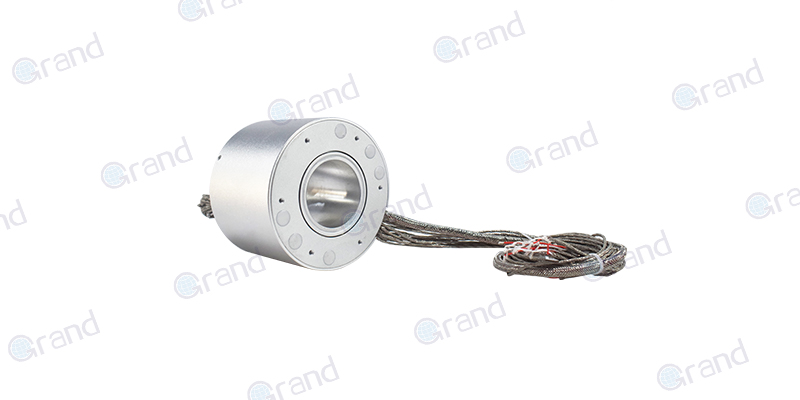
The Role of Slip Rings in Kiln Operations
In the intricate mechanics of kiln operations, slip rings play a crucial role. Essentially functioning as the ‘electrical bridge,’ they permit current and signals from a stationary source to the rotating kiln. This electricity powers everything – the kiln’s heating elements, monitoring devices, and other relevant control systems – all facilitated by the slip ring. Without the slip rings’ ability to manage this power transfer efficiently, the devices aboard the rotating kiln would lack consistency and reliability in their functioning.
Efficiency is a critical consideration in industrial operations, and slip rings directly contribute to kiln efficiency. Their ability to permit the continuous rotation of the kiln eliminates the need for stop-and-start sequences, which can be time-consuming and often destabilizing for production processes. By maintaining a steady transmission of power and signals, slip rings allow for continual operations, directly contributing to the consistency of production flow and, thus, enhancing overall operational efficiency.
Aside from aiding efficiency, slip rings play a significant role in ensuring safety in kiln operations. Industrial kilns operate at very high temperatures and process various materials, some potentially hazardous. In this scenario, consistent control and monitoring are paramount in managing risk factors. By facilitating uninterrupted communication and power supply, slip rings ensure that safety systems, temperature regulation devices, and control instrumentation present on the rotary part of the kiln remain continuously active. This continuity is crucial because even a brief interruption could compromise safety, leading to system failures or accidents, making slip rings an integral part of the safety network within kiln operations.
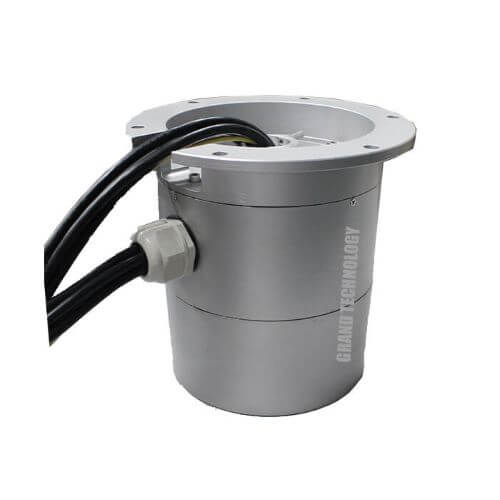
The Function of Slip Rings in Kilns
Power Transmission
Kilns require continuous power to maintain the high temperatures necessary for various processes. Slip rings enable the transmission of electrical power from the static part of the kiln to the rotating drum. This is particularly important for kilns that need to rotate continuously to ensure even heat distribution and efficient processing of materials.
Signal Transmission
Apart from power, kilns often need to transmit data and signals for monitoring and control purposes. Slip rings facilitate the transmission of these signals, ensuring that data from temperature sensors, pressure gauges, and other monitoring devices are accurately relayed to control systems. This ensures precise control over the kiln’s operational parameters, leading to better product quality and process efficiency.
Enhancing Durability and Reliability
Kilns operate in harsh environments with high temperatures, dust, and other challenging conditions. Slip rings are designed to withstand these conditions, providing durable and reliable performance. High-quality slip rings minimize maintenance requirements and reduce downtime, which is crucial for continuous kiln operations.

Types of Slip Rings Used in Kilns
Slip rings are crucial components in kiln operations, ensuring the seamless transmission of power and signals in a rotating environment. The specific requirements of kiln operations necessitate the use of various types of slip rings, each suited to different operational needs and constraints. Below are the primary types of slip rings used in kilns:
Through Bore Slip Rings
Through bore slip rings, also known as hollow shaft slip rings, feature a central hole that allows for the passage of other components, such as shafts, pipes, or cables. This design is particularly beneficial in applications where the slip ring must accommodate additional elements running through its center.
Applications in Kilns
- Integration with Rotating Shafts: Kilns often require the integration of rotating shafts for structural support and movement. Through bore slip rings are ideal for such configurations, providing a pathway for the shafts while enabling power and signal transmission.
- Multi-functional Use: These slip rings allow for the simultaneous passage of hydraulic or pneumatic lines, making them versatile for complex kiln operations that require multiple types of media transmission.
Benefits
- Flexibility: The central bore offers flexibility in design and integration with other components.
- Space Efficiency: Through bore slip rings save space by combining multiple functions within a single unit.
Pancake Slip Rings
Pancake slip rings, or flat slip rings, have a disc-like shape, with conductive paths arranged on a flat surface. This design is beneficial in applications where axial space is limited, but a larger radial space is available.
Applications in Kilns
- Space-Constrained Environments: Kilns with limited axial space but sufficient radial space can benefit from the compact design of pancake slip rings.
- High Rotational Speeds: Their flat design allows for stable performance at high rotational speeds, which is often required in kiln operations to ensure even heating and material processing.
Benefits
- Compact Design: Pancake slip rings are ideal for installations where axial length is constrained.
- Stable Operation: The flat design provides stability and reduces the impact of centrifugal forces, ensuring reliable performance at high speeds.
Fiber Optic Slip Rings
Fiber optic slip rings use optical fibers to transmit data signals, providing high bandwidth and immunity to electromagnetic interference. These slip rings are essential for applications requiring high-speed data transmission and minimal signal loss.
Applications in Kilns
- High-Speed Data Transmission: Kilns equipped with advanced monitoring and control systems benefit from the high-speed data transmission capabilities of fiber optic slip rings.
- Electromagnetic Interference-Free Environments: In kilns where electrical noise and interference can affect signal quality, fiber optic slip rings ensure accurate and reliable communication.
Benefits
- High Bandwidth: Fiber optic slip rings offer superior data transmission rates, essential for real-time monitoring and control.
- Immunity to Interference: The use of optical fibers eliminates the risk of electromagnetic interference, ensuring clear and accurate signal transmission.
Capsule Slip Rings
Capsule slip rings are compact, enclosed slip rings designed for applications requiring a high degree of protection from environmental factors. They are typically smaller in size and used for low-current, low-voltage applications.
Applications in Kilns
- Protection from Dust and Debris: Kilns operate in environments with high levels of dust and debris. Capsule slip rings provide excellent protection, ensuring longevity and reliability.
- Small-Scale Kilns: For smaller kiln operations, where space and power requirements are minimal, capsule slip rings are an appropriate choice.
Benefits
- Compact and Enclosed: The compact, enclosed design protects against environmental damage.
- Cost-Effective: Capsule slip rings are typically more affordable, making them suitable for smaller or budget-constrained operations.
The selection of the appropriate type of slip ring for kiln operations depends on several factors, including space constraints, the need for multi-functional use, data transmission requirements, and environmental conditions. Through bore slip rings, pancake slip rings, fiber optic slip rings, and capsule slip rings each offer unique advantages that cater to the diverse needs of kiln operations. Understanding these types and their specific applications can help in optimizing kiln performance and ensuring efficient and reliable operations.
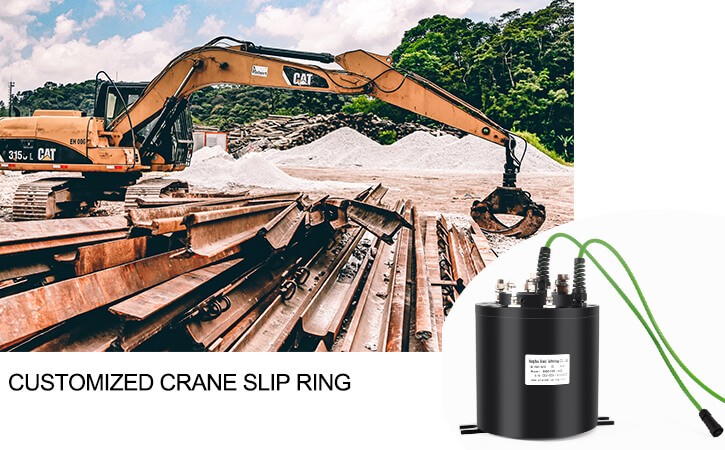
Factors to Consider When Choosing Kiln Slip Rings
Choosing the right slip ring for a kiln is a vitally important decision that considers multiple factors. One of these factors is the load capacity of the slip ring. This essentially refers to how much current the slip ring can handle across its contacts without overheating or declining performance. The load capacity should match the power requirements of all the devices that the kiln needs to operate.
The operating environment where the kiln and its slip rings will be employed is another crucial consideration. The slip rings must have the capability to endure the conditions around them, including facing constant exposure to heat, dust, moisture, or other abrasive materials prevalent in industrial settings.
Temperature handling is closely related to the operating environment, but it deserves separate attention. Since kilns naturally operate at very high temperatures, their slip rings should be able to withstand these temperatures without impairing their operational efficiency.
Electrical specifications are equally important when selecting a slip ring. These comprise the voltage and current ratings, the number of circuits, and signal compatibility. The selected slip rings should align closely with these parameters to ensure their compatibility with the rest of the kiln system.
From an end-user perspective, other concerns such as affordability, durability, and ease of maintenance weigh heavily on the decision-making process. Users typically seek a cost-effective balance between the initial cost and the operational efficiency of the slip ring over its lifespan. A cheaper slip ring might save money upfront, but if it has to be replaced frequently, it could result in higher long-term costs. Durability, thus becomes a major area of consideration. Similarly, ease of maintenance is an attraction for most users. A slip ring that requires minimal and simple maintenance while ensuring reliable, long-term operation adds invaluable convenience and cost efficiency.
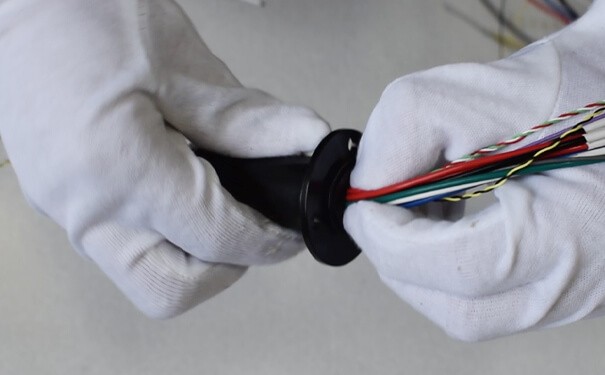
Benefits of Using Slip Rings in Kiln Operations
Slip rings are essential components in kiln operations, providing a reliable means of transmitting power and signals between stationary and rotating parts of the kiln. The integration of slip rings in kiln systems offers numerous advantages that enhance the overall efficiency, safety, and reliability of the operations. Here are the key benefits of using slip rings in kiln operations:
Improved Efficiency
Continuous Power Transmission
Slip rings enable the continuous transmission of electrical power from the stationary part of the kiln to the rotating drum. This uninterrupted power supply is crucial for maintaining the high temperatures required for various kiln processes, ensuring consistent and efficient operations.
Enhanced Data Communication
Kilns rely on precise data from sensors and control systems to maintain optimal operating conditions. Slip rings facilitate the seamless transmission of signals, allowing real-time monitoring and adjustments. This leads to improved process control and higher product quality.
Enhanced Safety
Reliable Signal Transmission
Accurate data transmission through slip rings ensures that critical parameters such as temperature, pressure, and rotational speed are continuously monitored. This real-time data allows for immediate corrective actions, preventing potential hazards and ensuring the safety of both personnel and equipment.
Minimized Electrical Noise
High-quality slip rings, particularly fiber optic slip rings, offer immunity to electromagnetic interference. This minimizes electrical noise and ensures clear signal transmission, which is vital for the accurate operation of control systems and safety devices.
Cost Savings
Reduced Maintenance Requirements
Slip rings are designed for durability and reliability, reducing the frequency of maintenance and repairs. High-quality slip rings can withstand the harsh operating conditions of kilns, such as high temperatures and dust, leading to longer service life and fewer interruptions.
Decreased Downtime
By ensuring continuous power and signal transmission, slip rings minimize operational downtime. This continuous operation is essential for industries that rely on kilns for production, leading to increased productivity and significant cost savings over time.
Flexibility and Versatility
Customization Options
Slip rings can be customized to meet specific requirements of different kiln operations. Whether it’s through bore slip rings for integrating rotating shafts or fiber optic slip rings for high-speed data transmission, there are various options available to suit unique operational needs.
Adaptability to Various Applications
Kilns are used in diverse industries, from cement manufacturing to ceramics and metallurgy. Slip rings are adaptable to different kiln designs and operational demands, making them a versatile solution for a wide range of applications.
Enhanced Performance
Stability at High Speeds
Kiln operations often involve high rotational speeds to ensure even heat distribution. Slip rings, especially pancake slip rings, provide stable performance at these high speeds, maintaining reliable power and signal transmission without compromising efficiency.
Improved Heat Distribution
By enabling continuous rotation, slip rings help in achieving even heat distribution within the kiln. This uniform heating is critical for processes such as sintering and calcining, leading to better quality products and more efficient material processing.
Environmental Resistance
Durability in Harsh Conditions
Kilns operate in environments with high temperatures, dust, and sometimes corrosive atmospheres. Slip rings are designed to withstand these harsh conditions, providing reliable performance and reducing the risk of operational failures due to environmental factors.
Protection from Contaminants
Certain types of slip rings, such as capsule slip rings, offer excellent protection against dust and debris. This protection ensures the longevity and reliability of the slip rings, even in the most challenging kiln environments.
The integration of slip rings in kiln operations provides a multitude of benefits, including improved efficiency, enhanced safety, cost savings, flexibility, enhanced performance, and environmental resistance. These advantages make slip rings indispensable components in various kiln applications, contributing to the overall success and productivity of industrial processes. Understanding and leveraging these benefits can help industries optimize their kiln operations and achieve superior results.

Common Issues with Kiln Slip Rings
Despite their core contribution to seamless kiln operations, slip rings can occasionally present challenges. They are under continuous mechanical stresses due to rotations and electrical load, making wear and tear a common issue. The rotating rings and stationary brushes often wear down over time, impacting the connectivity and consequently weakening the power and signal transmission. This wear can lead to disruptions in the kiln’s operations, reduced efficiency, and increased downtime for repairs and replacements.
Electrical faults are another area of concern. Incidents such as short circuits or grounding issues can occur, possibly as a result of excessive wear or poorly maintained insulation. Such troubles not only disrupt the kiln’s operation but also create safety issues. Electrical faults may lead to overloads, causing system failures or potentially fires. In a kiln environment, where consistent power is crucial and high temperatures are the norm, these failures can have serious repercussions, affecting productivity and potentially leading to hazardous situations.
Maintenance of kiln slip rings can also be challenging. Their positioning, built into the kiln’s structure and often at a height, can make inspection and repair tasks cumbersome. Moreover, the hot and dusty conditions typically seen around kilns can complicate maintenance efforts and speed up degradation. These maintenance challenges can negatively impact the overall efficiency of kiln operations. Regular inspection and prompt repair or replacement of damaged components become central to circumventing extensive operational disturbances and unplanned shutdowns that affect productivity drastically.
Maintenance and Repair of Kiln Slip Rings
Regular inspection of kiln slip rings holds great significance. Their critical role in maintaining the smooth operation of a kiln underscores the need for them to be in ideal working condition. Regular inspections are essential because they flag potential problems early before they escalate into more serious issues that could disrupt operations and lead to costly repairs.
Common maintenance practices for kiln slip rings generally involve cleaning, lubrication, and contact pressure adjustment. Cleaning the slip rings and brushes regularly can prevent the build-up of dust and debris, which can degrade the electrical connection. Similarly, lubrication reduces the friction between the rotating rings and stationary brushes, minimizing wear and tear. Adjustments to the contact pressure of the brushes over time can also ensure a solid and efficient electrical connection.
When it comes to repairs and parts replacement, a few tips can prove handy. First, always follow the manufacturer’s guidelines for replacement and repair procedures. Incorrect methods can often lead to more extensive damage or decrease the performance of the slip rings. Another critical piece of advice is to use Original Equipment Manufacturer (OEM) parts. These parts guarantee compatibility with the existing system and adherence to the original performance and safety standards, something that third-party parts may not always assure. Prioritizing OEM parts as replacements maintains the reliability of kiln operations, ensuring smooth, efficient, and safe operations in the long haul.
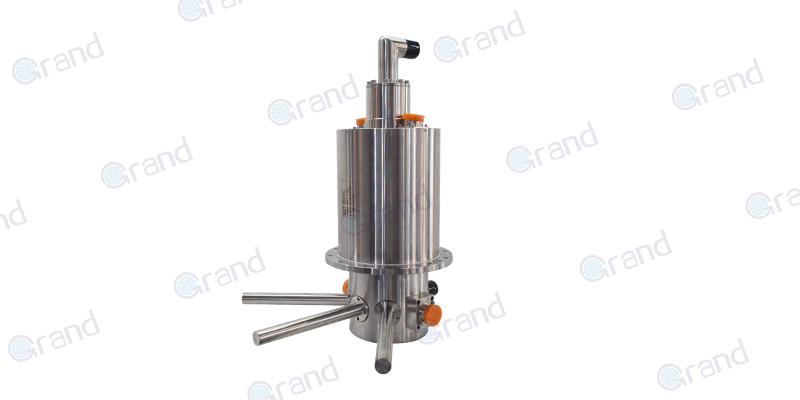
Innovations and Developments in Kiln Slip Ring Technology
The realm of kiln slip ring technology continually evolves, with advancements aimed at enhancing durability, efficiency, and adaptability. For instance, the use of improved materials, like advanced conductive alloys and superior composite brushes, has lengthened the life span of slip rings while simultaneously enabling them to handle increased loads more efficiently. Hard-wearing linings on the conductive rings improve endurance for continuous operation scenarios, significantly reducing wear and tear.
Moreover, innovative designs have focused on fueling increased efficiency. The integration of fiber-optic technology in slip rings offers high-speed data transmission capabilities, enabling slip rings to accommodate more complex and demanding control and monitoring systems. Heat dissipation methods, such as advanced cooling systems, have also been incorporated, allowing slip rings to function efficiently even amidst the high-temperature environments of kilns.
These advancements may substantially influence user choices and interactions with kiln slip rings. Improved durability can be an appealing factor for users, as it promises lower maintenance and replacement costs. The potential for handling bigger loads and ensuring better power transmission, backed by efficient systems, means users can expect improved performance and reliability from the kilns.
Additionally, these enhancements may also necessitate changes in maintenance practices – new materials or components could require different upkeep processes. Consequently, as these advancements become standard, users may need to adapt their maintenance preparation and practices to cater to these evolved slip rings to ensure their maximum longevity and operational effectiveness.
Conclusion
Understanding the role, selection, and maintenance of kiln slip rings is essential to optimizing kiln operations. Keeping abreast of the latest technological advancements adds another layer of complexity but ensures your operations remain efficient, future-proof, and most importantly, safe.
From a broader perspective, slip rings are not just components; they’re the heart of seamless kiln operations, ensuring your kiln—and by extension, your business—keeps turning.
See What We Can Do
